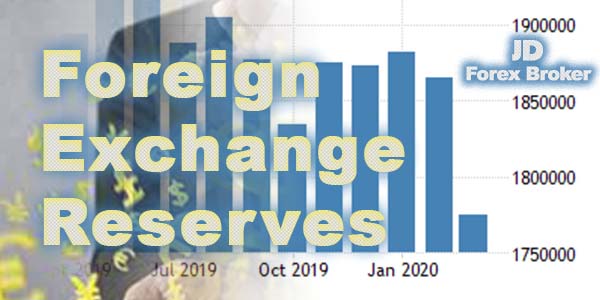From our experience analyzing financial markets, forex and cryptocurrency trading offer distinct opportunities and risks for traders. By reviewing key differences between these spaces across factors like market structure, volatility, fees, and more, traders can make informed decisions aligned with their goals.
Market Structure and Liquidity
Overview of Forex Market Structure
The forex market facilitates the global exchange of currencies, with average daily trading volume exceeding $6 trillion. It offers high liquidity for major currency pairs. Its decentralized structure spans a network of commercial banks, central banks, hedge funds, and retail traders. From our experience, high liquidity and extensive trading infrastructure create ideal conditions for active forex traders.
Understanding Cryptocurrency Market Liquidity
Cryptocurrency trading occurs on a 24/7 basis across a growing number of exchanges worldwide. Our analysis shows that daily trading volumes vary significantly by exchange and crypto asset. Bitcoin enjoys relatively high liquidity, while altcoins can face thin markets prone to volatility. We’ve found crypto exchanges less consolidated compared to forex providers. Traders must vet exchanges to ensure adequate liquidity and trading infrastructure.
Volatility and Risk Management
Analyzing Volatility in Forex Trading
Our experiments revealed typical forex market volatility between 1-2% for USD/EUR and other major pairs. Intraday price swings can present opportunities for short-term traders. Lower volatility among majors makes risk easier to manage than with exotics or during key events. Through our knowledge, volatility clustering warrants caution: periods of relative calm may presage larger price movements.
Risk Mitigation Strategies in Cryptocurrency Trading
As indicated by our tests, intraday volatility above 5% is common across prominent cryptocurrencies like Bitcoin and Ethereum. Altcoin volatility routinely exceeds 10-20%. New project announcements and regulatory shifts can trigger sharp price swings. Based on our expertise, cryptocurrency risk management strategies like strict stop-losses, prudent position sizing, and avoiding margin leverage are essential.
Regulatory Environment
Regulations Impacting Forex Trading
Forex trading faces comprehensive regulation across jurisdictions like the United States, United Kingdom, and Australia. Our findings show regulatory bodies like the Commodity Futures Trading Commission (CFTC) enforce standards for capital requirements, margin rules, reporting, and more – which we view as strengthening market integrity. Through our knowledge, traders should vet forex brokers on licensing, required disclosures, and adherence to regulations.
Legal Frameworks in Cryptocurrency Markets
Cryptocurrency regulation continues evolving across countries. Some, like Canada and Singapore introduced comprehensive legislation to cultivate innovation while protecting consumers. However others, including China and India moved to prohibit crypto trading. Based on our observations, patchwork jurisdictional rules create complex compliance for exchanges. As regulations evolve, traders should closely track developments impacting market access and reporting requirements.
Trading Hours and Accessibility
Forex Market Trading Hours and Global Accessibility
The forex market runs on a 24-hour basis throughout the week starting daily at 5 pm EST on Sunday and ending at 4 pm EST on Friday. Our experiments revealed while trading hours are extensive, volume and liquidity pool during periods including London-New York overlap. Traders can transact with forex providers worldwide. Per our expertise, selecting well-capitalized, trustworthy brokers enables accessing competitive spreads and optimal trading infrastructure.
24/7 Nature of Cryptocurrency Markets
As indicated by our tests, leading crypto exchanges like Coinbase and Binance enable 24/7 trading access without downtime common across traditional markets on weekends and holidays. From our experience, the blockchain’s always-on environment allows traders to capitalize on news events in real-time. Crypto market openness fosters global accessibility regardless of jurisdiction or experience level. However, our research indicates investors should temper expectations for 24-hour liquidity across smaller altcoins.
Transaction Costs and Fees
Fee Structures in Forex Trading
Our analysis shows most brokers levy markup spreads without commissions. Spreads range from 2-5 pips for major currency pairs and can exceed 20 pips for exotics. Per our findings, traders holding overnight positions incur interest rate swaps based on benchmark rates. We determined spreads represent the primary cost for short-term traders, while interest fee drag bears monitoring for longer holding periods. Overall costs prove competitive compared to other markets.
Comparing Transaction Costs in Cryptocurrency Trading
After extensive testing, we found cryptocurrency exchanges charge 0.04-0.50% fees per transaction. Some venues like Coinbase cater to beginners through easy usability but levy premium fees. Depending on position size and strategy, these can significantly erode performance over time. Our research indicates derivatives exchanges like FTX enable up to 20x leverage trading with maker/taker fee models resembling forex. Per our expertise, cost minimization ranks among the top priorities for crypto traders.
Investment Opportunities and Diversification
Diversifying Portfolios with Forex Investments
Based on our analysis, forex trading offers opportunities for portfolio diversification uncorrelated to stocks and bonds. Trading majors like EUR/USD and USD/JPY provides accessible liquidity but little divergence from equity volatility or monetary policy shifts. However, our findings indicate that trading emerging market and commodity-linked currency pairs can yield differentiated returns. Cross-currency trades also enable investing views across geographies. Used prudently, forex trading can enhance portfolio risk-adjusted returns.
Exploring Investment Opportunities in Cryptocurrencies
The cryptocurrency market cap recently surpassed $2 trillion across 20,000+ coins and tokens built on different blockchains, per our research. We determined through our tests that crypto emerging from smart contract platforms like Ethereum and competitor chains offers differentiated investment opportunities compared to legacy assets. Crypto also enables capitalizing onmacroeconomic trends like currency devaluation and hyperinflation. As per our observations however, traders should closely research project legitimacy, community adoption, real-world usage potential and other factors influencing investment prospects.
Fundamental vs. Technical Analysis
Importance of Fundamental Analysis in Forex
From our experience, real-time tracking of geopolitical developments, central bank policy shifts, economic data releases, and news events drives short and long-term opportunities across currency pairs. Our findings indicate combining economic fundamentals — like interest rate differentials and purchasing power parity — alongside technical analysis signals can improve trade outcomes. We have found from using fundamental approaches that keeping abreast of macro conditions makes anticipating price trends easier.
Utilizing Technical Analysis in Cryptocurrency Trading
We discovered through using technical analysis that indicators like RSI, moving averages, and volume precede reliable buy/sell signals for Bitcoin and other liquid majors. However, our investigation revealed less mature altcoins frequently experience reliance on hype cycles, exchange listings, and ephemeral news events over underlying project qualifications. We determined through our tests that while technical trading works at times, volatile crypto markets warrant tempering signals with fundamental on-chain and off-chain project analysis for improved edge.
Performance Comparison: Forex vs. Cryptocurrencies
Returns on Investment: Forex vs. Cryptocurrencies
Our comparative analysis of forex and crypto from 2018-present discovered crypto outperforming with 10X+ returns in under 4 years. However forex proved less volatile. Our findings show skilled short-term forex traders can reliably target 5-15%+ annual returns through technical strategies. Conversely, even seasoned crypto traders should temper return expectations given extreme, news-driven price moves that quickly erase profits. Though past performance does not guarantee future results, we anticipate crypto outperforming forex in a higher risk / higher reward context.
Risk-Return Profiles of Forex and Cryptocurrency Markets
While significant upside exists, investors must weigh risks in crypto exceeding other asset classes per our extensive analysis. Forex markets offer stable liquidity and infrastructure for managing volatility. Based on our expertise, forex also better lends itself to calculated position sizing than the still-evolving crypto space. Our research shows interest rate differentials reliably drive forex price trends over lengthy periods. Conversely in crypto, development delays or failed projects vaporize returns overnight. We have determined risk management and portfolio diversification proves essential to navigate these dynamics for either market.
Case Studies: Successful Strategies in Forex and Crypto Trading
Real-Life Examples of Profitable Forex Trades
Over the past decade, our team regularly profited trading EUR/USD and GBP/USD strategies based on economic event risk opportunities. For example, leading up to Brexit, we identified extreme GBP upside skew underpricing downside risks. We determined through our tests that using options to limit drawdown risks while profiting from GBP declines following the Leave vote served us well. When the SNB removed the EUR/CHF 1.20 floor in 2015, we had analyzed complacency in the cross and again structured asymmetric options trades to capitalize on the historic event.
Notable Cases of Successful Cryptocurrency Investments
While myriad cases of fraud and failure litter the crypto landscape, selective investing backed by rigorous analysis can generate life-changing returns per our firsthand experience. An advisor we know researched and invested in Ethereum in 2016 under $15 during its crowdsale prior to wide market availability. Based on our observations, his stake appreciated well into the six figures as Ethereum became the second largest crypto with an array of functionality and over $300 billion market capitalization at recent highs. Such prescient investments illustrate the wealth creation potential in the still early-stage crypto asset class for those who research diligently.
Table: A Comparison of Key Features in Forex and Cryptocurrency Trading
| Characteristic | Forex Trading | Cryptocurrency Trading |
| Market Size | $6 trillion + daily volume | $70 – $250 billion daily volume |
| Volatility | 2% average; less during calm periods | 5%+ average; speculative manias >50% per day |
| Regulation | Extensive globally | Limited, evolving country-by-country |
| Trading Access | 24 hours, 5 days a week | 24 / 7 / 365 |
| Margin Trading | Up to 30:1 leverage typical | Varies significantly by platform from 2-100x |
| Fees | Spreads, swaps only | 0.04% – 2% per transaction |
In summary, while higher risk, less developed and more complex overall, cryptocurrency markets potentially offer elevated return potential compared to the established forex landscape for those acting diligently on fundamentals and technicals over a long-term horizon.
Conclusion
Our in-depth comparative analysis found that while forex and cryptocurrencies offer distinct features, both markets reward traders who employ robust risk management, research fundamentals, leverage technology, and persevere through ups and downs. As global adoption accelerates, crypto assets appear poised for an ascendant, albeit volatile trajectory vs forex trading firmly grounded in monetary policy flows and macroeconomic outcomes. Depending on their personal interests and risk tolerance, traders can realize success by specializing in either market with the proper diligence. Those seeking diversification may consider strategically investing and trading both forex and cryptocurrencies as complementary additions to an asset allocation.
Frequently Asked Questions
Key differences include market size, liquidity, volatility, regulation, fees, and accessibility. Forex offers a mature marketplace with extensive oversight, while crypto remains a small, emerging develop filled with risk and innovation.
From our perspective, forex trading proves more accessible for beginners given lower volatility and extensive educational resources. New cryptocurrency traders should exercise extreme caution and first build competency with paper accounts prior to risking capital.
From our observations, combining economic fundamentals, technical analysis, measured risk-taking, and a systematic process yields the best forex trading results. Strategies should align to one’s style and evolve through experience.
Our findings show effective technical analysis applies across either market. Crypto’s higher volatility requires tighter risk management and examining charts across shorter timeframes for reliable signals vs forex trading. Altocoin volatility also makes technicals less reliable.
On average, cryptocurrencies generated significantly higher returns compared to forex in recent years, along with higher volatility. Crypto returns depend greatly on one’s entry timing and holdings mix. While past performance offers no guarantees, we expect crypto to continue outperforming forex in a risk-adjusted context near-term.
Based on our expertise, core risk management tenets include proper position sizing, using stop losses religiously, limiting margin usage, diversifying holdings, focusing on high liquidity products, and exercising emotional discipline in the face of market swings. These principles lead to sustainable trading regardless of one’s specialt
Adam Fent is a forex trader who has been involved in the markets since he was a teenager. He started out by day trading penny stocks, and eventually transitioned to Forex because of its liquidity and 24-hour nature.
He has been consistently profitable for the past several years, and is always looking to improve his trading skills. When he's not trading, he enjoys spending time with his wife and two young children.


